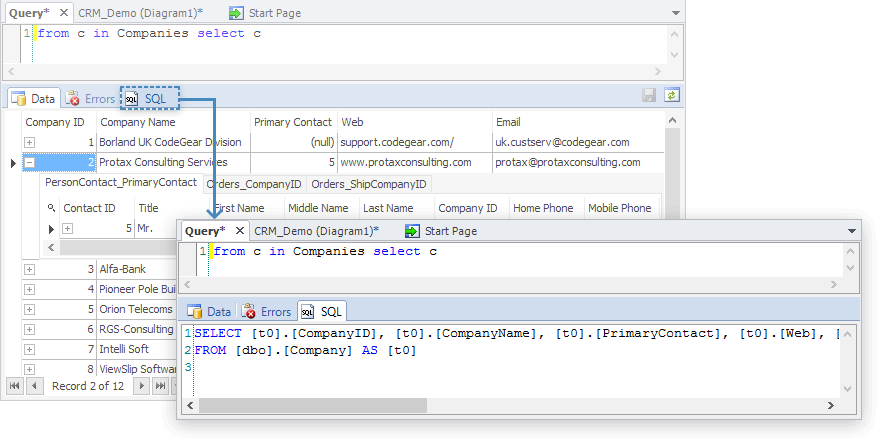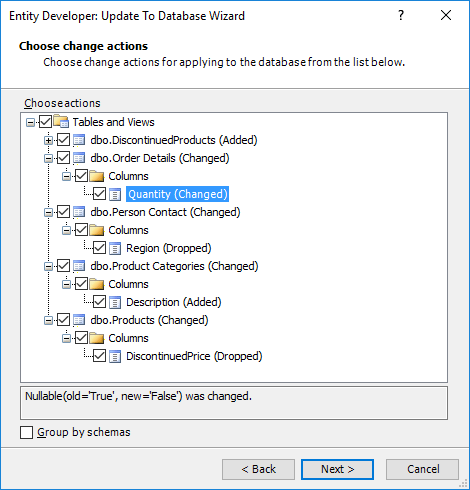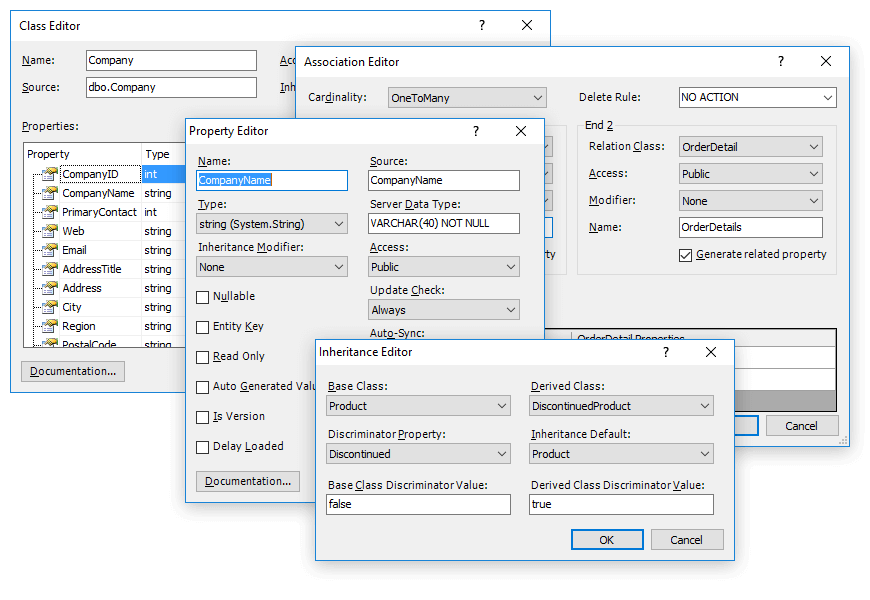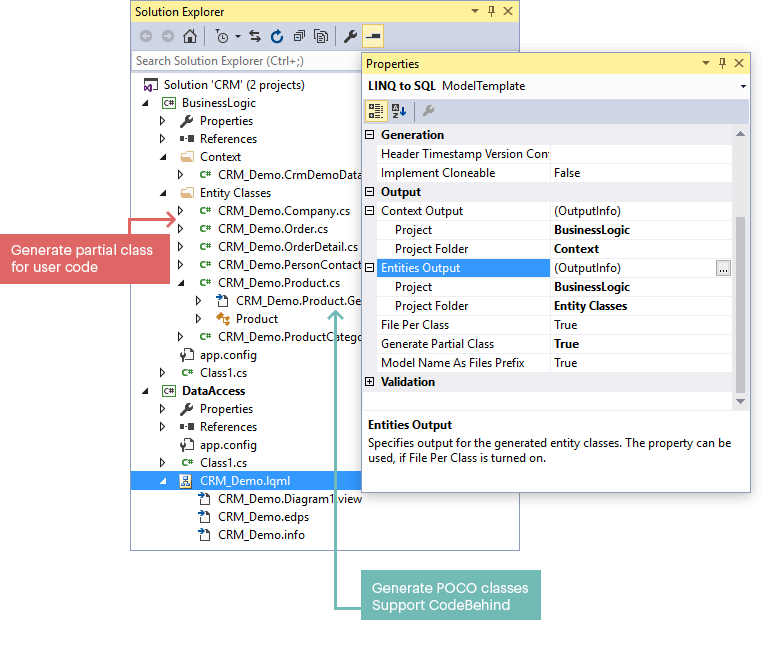Model-First, Database-First, or Mixed
With our LINQ to SQL designer you can use either Model-First
or Database-First design approach, or you may
mix them in any way you like. Easy-to-use Update From Database and Update To Database
wizards allow you to synchronize your model and database in any directions at any
moment.
Update From Database Wizard tries to preserve manual changes to the model
where possible. The Update From Database and Update To Database wizards detect all
the database changes that can affect the model and vice versa, e.g. created and deleted tables
and views, their columns and foreign keys, column datatype changes, etc.
All changes are displayed in an easy-to-understand form, and you can select only a part of the
changes to apply. When updating database schema, Entity Developer considers database
server specificity. It does not try to perform unsupported operations.
Tweak the Database-First Settings
When using database-first approach, Entity Developer for LINQ to SQL provides a number
of options for creating a model.
You may tweak naming rules for the generated names
of the classes and their members. Entity Developer allows you to configure case
and pluralization, removing and adding of prefixes and suffixes, etc.
After this
you may set the default parameters for the generated classes: default assembly and
namespace, default schema, cascade style, strategy for accessing a property value, etc.
Test Your Model at Design-Time
Our LINQ to SQL designer allows viewing and editing data
of tables, views, and model entities, create and execute LINQ queries against
the model, eliminating the need for additional applications and reducing time for
accessing these operations.

Preparing Test Data
With Entity Developer you may perform viewing and quick editing of the database
data from the tables in the Database Explorer. This data is editable, allowing you
to quickly insert some data into the database to perform some testing.
Designing and Debugging LINQ Queries
Our LINQ to SQL designer allows you to execute LINQ queries directly against
the model without the need to write a sample application. You can use our built-in
query editor to design queries, which can be saved for future use, and view the
returned data and generated SQL.



